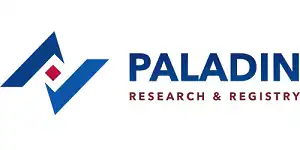Q: What rate of return should a 20- or 30-something use when using a retirement planning calculator? (They are often preset to 6% or 8%). And does that include inflation? Depending on the assumptions I use, I get drastically different answers. On the low-end, I’m saving too little and on the high-end, I’m saving too much. What do you recommend? — Kimberly
Great question. As you’ve noticed, a small difference in your assumed rate of return can drastically change how much you need to save for retirement. Not to mention inflation and the income you’ll need in retirement.
Assumed rate of return
I’ve seen people use everything between 5% and 12% for average annual returns over a lifetime of investing. But which rate of return is more accurate: 5% or 12%?
Maybe both. There are two big factors to consider:
- Whether or not the assumed rate of return accounts for inflation.
- The investment time period.
Inflation
Historically, the U.S. inflation rate fluctuates between about 1.5% and 4% per year. So if you got a 10% return on your investments in a year that saw 3% inflation, your inflation-adjusted return is more like 7% (that’s an oversimplification of the math, but you get the idea). Remember, inflation is the whole reason you can’t just stash your savings in a bank account and expect to grow wealthy. If inflation is 3% and you’re only earning 2%, you’re losing money!
Investment period
How long you have to invest will impact the rate of return you can expect for a number of reasons. For one, the longer you have to invest, the more aggressive you can be with your asset allocation by favoring stocks and other more volatile — but potentially more rewarding — investments. In addition, the longer you invest, the more good years you will hopefully have to overcome the bad ones. This is also why it’s important not to get out of the market during a decline — you risk missing out on the bounce-back.
Some examples
I pulled some numbers using this calculator for the market’s average rate of return over three 30-year periods. I’ve shown the results both with and without inflation.
COMPOUND ANNUAL GROWTH RATE FOR THE S&P 500
| 30-Year Period | Before Inflation | Adjusted for Inflation |
|---|---|---|
| 1960-1989 | 10.30% | 5.07% |
| 1970-1999 | 13.78% | 8.24% |
| 1980-2009 | 11.29% | 7.52% |
I should note that these numbers are the compound annual growth rate (CAGR) which is a more accurate measure of market returns than a simple annualized average. For example, if you have an investment that goes up 100% one year and then slides 50% the next, you’ve made $0, yet the simple average return (100 – 50 / 2) is stated as 25% . The CAGR would be 0% .
As you can see, inflation-adjusted average returns for the S&P 500 have been between 5% and 8% over a few selected 30-year periods. The bottom line is that using a rate of return of 6% or 7% is a good bet for your retirement planning. I’ll use 6% because I would rather be conservative and save more than be overly optimistic and wind up short in 30 years.
Retirement planning questions
Anticipating the rate of return is one piece of a much larger retirement puzzle.
If you’re still not sure, the best way to give yourself a headstart on your retirement planning is to work with a certified financial planner. If you need help tracking one down, Paladin is a great resource. Simply input information about your goals and Paladin Registry will match you with a pre-screened financial fiduciary who can help you reach your savings goals.
Paladin Registry is a free directory of financial planners and registered investment advisors (RIAs). The registry has the highest standards for its advisors, and it works with your requirements to find the perfect match.
- Free to use
- Narrowed and vetted pool
- No obligation to move forward
- Requires at least $100,000 in investable assets
Give some thought to assumptions you need to make about the rate of return and other variables that come into play when planning for your eventual retirement.
